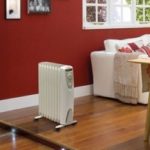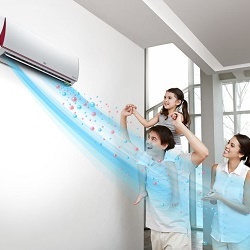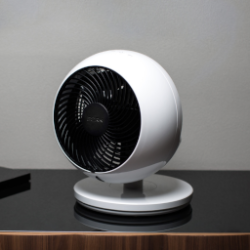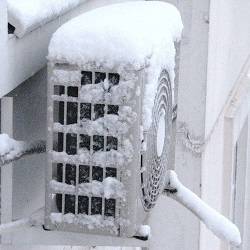Types of ceramic infrared heaters
Such modern household appliances as ceramic infrared heaters, is a truly revolutionary technology that has practically no tangible flaws, but only a large number of advantages over other types of heating. Units do not dry the air and do not burn oxygen. In comparison with oil heaters, they are completely safe, because they do not heat up so much and can be installed even in the nursery.
This is the most economical type of heater, which is based on ceramics.
In ceramic devices, in addition to convection, also applies infrared radiation. Heat from such a source goes to a given point. Due to this, it is possible to warm certain places, zones and objects (in more detail about the scheme of action - principle of operation of the heater with infrared radiation). The heater is not idle, passing in the most effective and economical manner.There are a large number of models: with a remote control and even air purification and ionization systems.
Content
Types of heaters
Manufacturers offer customers the opportunity to choose among the following types of heaters:
- wall mounted;
- floor standing;
- desktop
Ceramic infrared heaters, which are mounted on the wall are the most overall. Their appearance is comparable to the classic split air conditioning system, but the plate itself has differences in its thickness. When hanging it above the baseboard, you can save space as much as possible, which is important in a small apartment.

Due to the fact that warm air spreads over the top, it is recommended to install such systems as low as possible.
The maximum efficiency of the use of outdoor systems. They have a built-in safety control, which in case of overheating or accidental tipping of the device, immediately disable it.
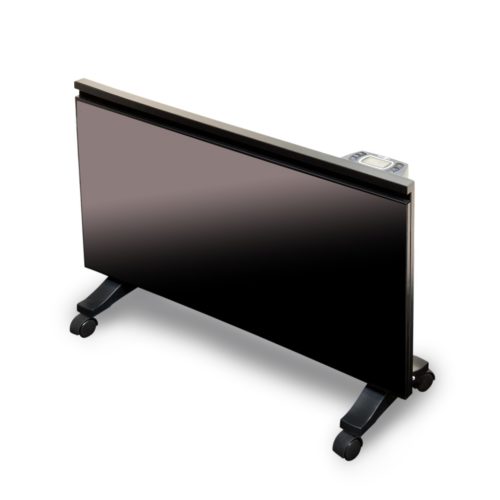
Ceramic-type table heaters often have a special mechanism that allows them rotate, so that the heating can extend almost 360 degrees.
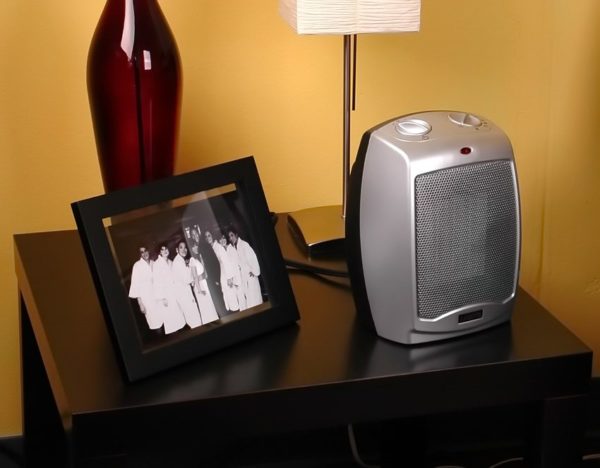
For short-term heating of open areas, for example in a country house, it is recommended to use street gas infrared heater.
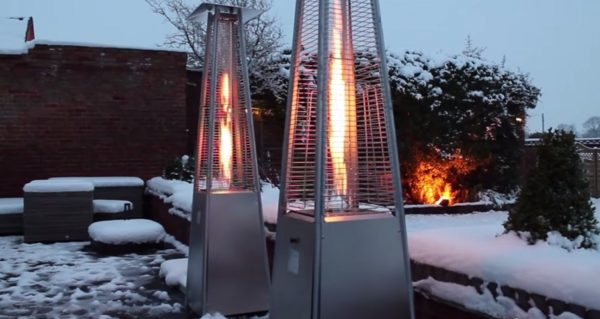
Positive sides
Infrared heaters are the most modern devices, so they take into account all the shortcomings of previous models. Such devices are not at all similar to oil ones, since the principle of their heating is most similar to natural solar radiation. Their waves propagate mainly on the surface of walls and objects. And already they are heated by ambient air.
Regardless of the type of ceramic infrared heater, the room is heated as quickly as possible.
It is also worth noting that such units consume many times less energy than any other equipment. At the same time a large area is heated in a relatively short time. The device has not only less weight, but also small dimensions, which makes it possible to easily transfer it from place to place.
A high level of security can also be counted among the indisputable advantages of infrared heaters. They do not burn oxygen, equipped with antibacterial lamp. Heater practically no noise, and thanks to modern design, is able to fit into any interior.
If we talk about the shortcomings, they are almost nonexistent, if you do not take into account the relatively high cost.
How to choose: selection criteria
The choice of infrared ceramic heater is directly dependent from the squareto be heated. Initially, it is necessary to determine the type of device, stationary, it will be or mobile.
The best option is a ceiling unit. It occupies the minimum amount of space, but gives a fairly wide range of radiation. Some models can be mounted directly in a false ceiling.
Often, such equipment is mounted on the wall, but when there are small children in the room, the specialist must calculate the distance from the floor - for the safe operation of the heater.
For installation of equipment under the window, it is necessary to choose a separate view with plinth execution.
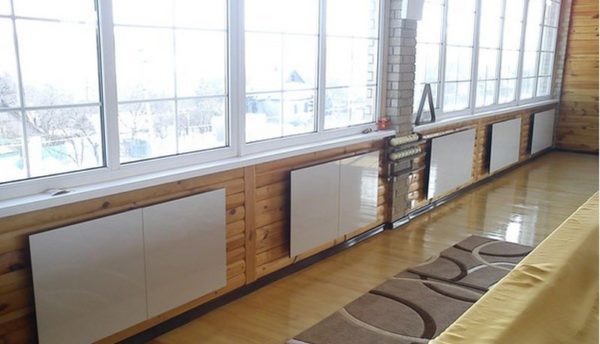
Wavelength
Each heater has its own specific wavelength:
- Long waves. Longwave models are heated to 300 degrees and most recommended for use in everyday life.
- Medium waves. Such devices can heat up to 600 degrees, but in this case the height of the premises should be at least 6 meters. Such units are often installed in administrative buildings.
- Short waves The units heat up to 800 degrees and they need the height of the premises from 6 to 8 meters. They are most often used precisely in outdoor conditions, as it is not recommended to install them at home.
Optimum power
Often enough on 10 square meters 1000 watts of power. But if no other sources of heating are planned, it is necessary to provide additional energy. It is necessary to take into account the loss of heat from cold walls, windows, etc.
Now on sale are even low-power devices, not exceeding 300 watts. They will be relevant only in the case of the main heating, as a quick option for heating the room. Such devices are not capable of causing any harm, due to low power.
For a country house it is necessary to calculate the power, based on 70 watts per 1 square meter.Such a calculation is also suitable for a gas infrared heater for a tent.
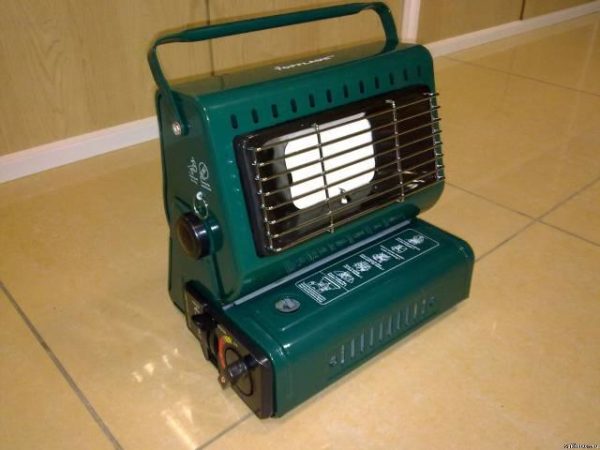
Insulator
The body of the unit will also be heated during operation, therefore, in order not to observe a temperature rise of 95 degrees, it uses a special insulator. It can be of different types and variations, but the highest quality is considered basaltic.
It is best that there are no additives in the insulator that can harm living organisms due to the release of formaldehyde when heated.
Heater body
The heater of the device produces a high enough temperature, so you need to pay attention on materialfrom which it is made. More recently, only steel has been used, but aluminum alloy is now used. In addition to external aesthetic beauty, it has a high level of reliability.
When buying, it is necessary to inspect the case for the presence of corrosion and the absence of a paint and varnish coating, which is unacceptable.
Company selection
Often, each manufacturer tries to advertise their product by all available methods, however, there are cases when poor-quality goods are praised especially actively.From here it comes that well-known brands, which for years represent high-quality equipment, are not particularly eager to praise their heaters, because their reputation has been working for them for a long time. The only negative thing is that the cost of such units is quite high, but the quality is worth it.
Indisputable leaders are manufacturers from Europewhich brought their production capacity to China.
Additional systems
The presence of the following options will not be amiss:
- Built-in thermostat, through which you can control and maintain the temperature.
- Rollover protection that must be present in desktop models. Remote control panel.
IR heaters are able to create a comfortable atmosphere in the room In any weather. As for the street variants, they do not cause any problems during installation - they are easy to assemble and easy to understand. Transportation also does not cause difficulties, due to low weight and dimensions of the devices.
Ceramic infrared heater is not exposed to weathering.
In addition, you can make an infrared heater with your own hands. Of course, it will not be as complete as the purchase, but it can warm a large enough area.
Spiral and infrared heater
To make such a device on your own, you must purchase an infrared port and an incandescent spiral. The spiral should be installed in a rectangular and fairly voluminous unit, which, in turn, should be connected to the electrical supply. The infrared port joins already to the ready block with a spiral.
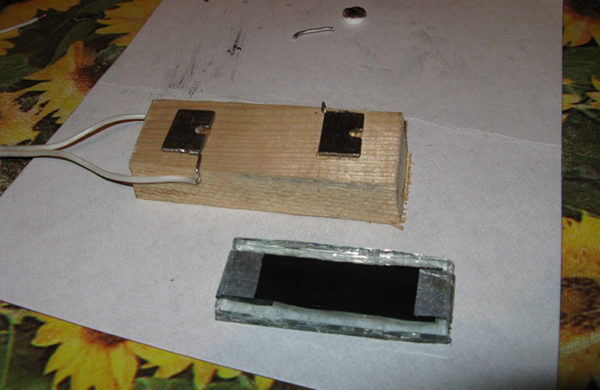
The basis of the operation of such a device lies in the fact that radiation from the IR port is transmitted as heat waves in the infrared range, which further propagate through the territory.

/rating_off.png)






